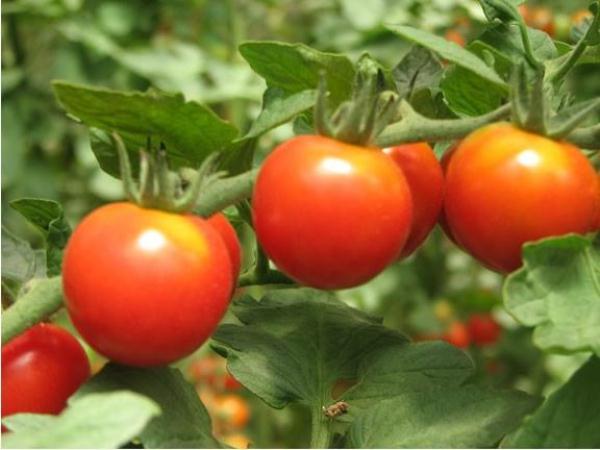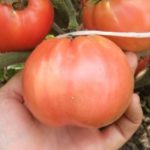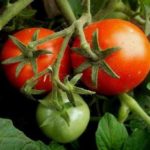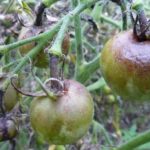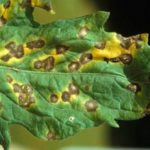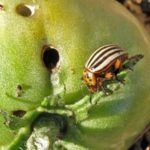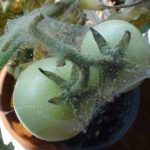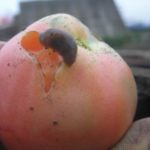If you like to experiment and look for new varieties of tomatoes for your plot, in this case you will appreciate the early variety of tomatoes Klusha, description and characteristics of which are presented below.
Table of contents
Description and characteristics of tomato variety Klusha
Thanks to the work of Russian breeders in 2006, this remarkable variety of tomatoes was obtained. The grade received the name thanks to the similarity with chicken, hiding under the chickens. This species belongs to the varieties of early aging. All regions of Russia are suitable for cultivation.
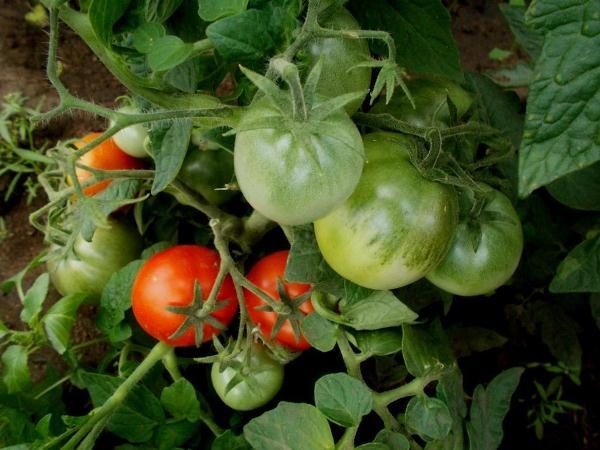
The bush is low, grows from 40 to 60 cm. The leaves are dark green. During the flowering period, 7-8 inflorescences are formed, which subsequently almost all give an ovary. Due to the fact that the bush is compact, it can be grown on the windowsill or on the balcony. Does not require a garter and pinching. The variety is fertile, with proper care from one bush you can get 2.5-3 kg of fruit. Fruits are not large, weighing from 100 to 200 grams, smooth rounded shape with a slight ribbing. By color, Klusha is red and Super Klusha is pink. The pink fruits of the Supercluster are sweeter, while Klushi has a sour taste, but still tasty. The fruit has six seed chambers.
- Super wedge
- Broody
Advantages and disadvantages
The benefits of tomato Klusha include:
- high immunity to diseases;
- plentiful fruiting;
- great taste data;
- versatility applications (salads, canning);
- good marketable condition;
- does not require a garter and removal of processes;
- the good transportability.
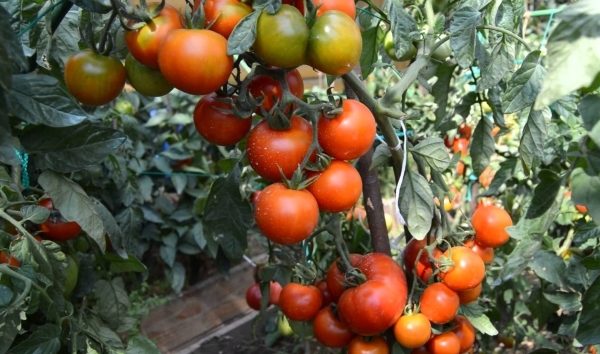
Disadvantages gardeners include only the presence of a large number of leaves.
Seed preparation
Seed preparation is carried out in several stages:
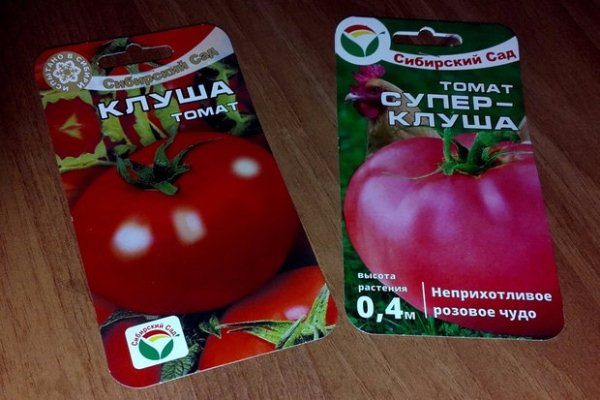
- selection of quality seeds by soaking in saline;
- disinfection with 1% potassium permanganate solution;
- growth stimulant treatment;
- seed germination;
- hardening;
- warming up
Soil preparation
It is recommended to take the soil from the garden where zucchini, parsley and carrots used to grow.
Land from the garden to mix in equal parts with sifted river sand and peat. It is not worth adding ash, as this variety loves slightly acidic soil, although it feels comfortable with a neutral level of acidity. Steam the mixture or pour a strong solution of manganese for the destruction of larvae pests. In the prepared soil can be planted seeds.
Growing seedlings
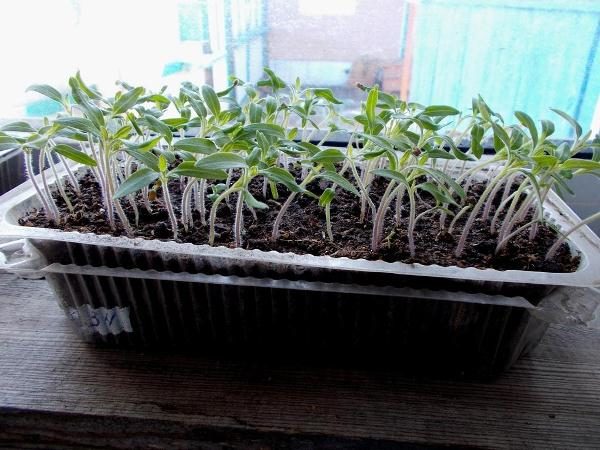
The optimal time for planting seeds is at the end of March. Sow the seeds in plastic containers, deepening them by 1 cm. Distance between seeds 2,5 cm. After sowing, the ground is moistened, covered with glass and taken to a warm, well-lit room. When the first germs appear, the glass is removed, the soil is moistened with a spray bottle.
If the seedlings have two leaves, seedlings should be transplanted into separate containers. It is necessary to transplant plants with extreme caution, with a lump of earth from the previous place of growth, so as not to damage the not yet strengthened root system. One week after transplantation, fertilizing is recommended. For this you can use fermented chicken manure or mullein.
Planted plants in open ground in the presence of 3-4 leaves. Age of seedlings at this point 55 —60 days Before planting seedlings need to harden.To do this, reduce the temperature in the room to 18 degrees, or put the plants on the balcony.
Transplanting seedlings in open ground and subsequent care
In greenhouses seedlings transplanted May 12-15. By this time, the height of the seedlings should be 20-25 cm. On open beds, seedlings are planted in late May or early June. The soil in the garden should be watered with a strong solution of manganese for disinfection. On 1 sq. meter planted 6 bushes. Before planting, ½ buckets of warm water should be poured into each well. Do not deeply deepen the plants, as the bushes do not grow tall, and the ovary in this case will touch the ground. Watering need tomatoes as the soil dries.
Another important condition for better plant growth is weeding and loosening the soil. Loosening should be done after each watering, so that the root system gets more oxygen. Timely removal of weeds will also have a beneficial effect on plant growth.Weeds shade seedlings and pull nutrients from the soil.
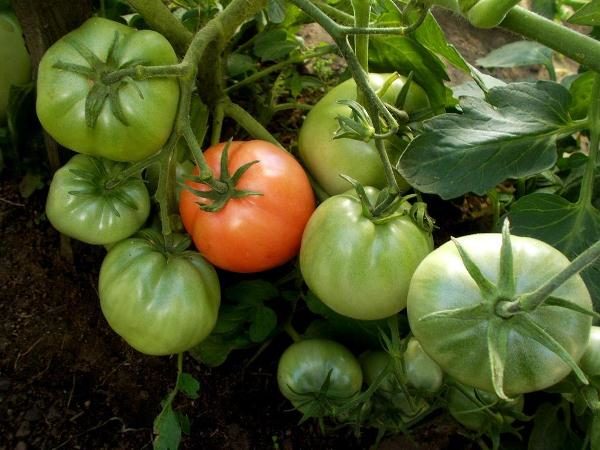
The first feeding is necessary to make two weeks after transplantation. For this purpose it is better to use nitroammophos fertilizer. Add a matchbox of fertilizer to 10 liters of water. For subsequent dressings it is better to use complex mineral fertilizers.
Seed collection
It is necessary to choose mature fruit without damage. Cut into slices, with a spoon, select the seeds with the juice and place them in a glass jar for fermentation. The juice should cover the seeds. Cover the jar from above, but not tightly, so that there is oxygen access.
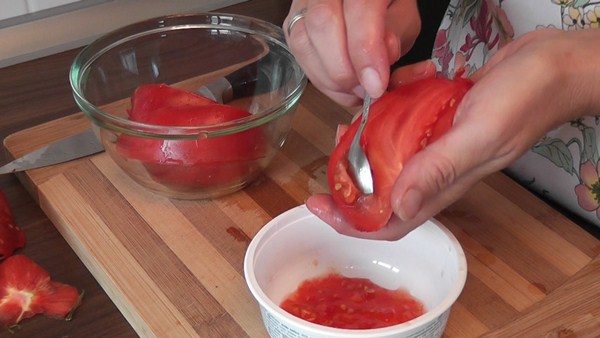
Fermented seeds within 24 hours. The procedure is considered complete if the seeds have sunk to the bottom, and the juice has brightened considerably. We pour out the juice from the jar, rinse the seeds well, pour it on a paper towel to dry. Drying procedure takes a week. Dry seeds collected in a paper envelope or rag bag. Store in a dark and dry place.
Diseases and pests
In plants of this variety is quite high immunity to diseases. But, in case of violation of growing conditions, this variety may be affected:
- Gray rot. In order to prevent the need to add ash to the soil;
- Late blight. In case of defeat of the bush, treatment with phytosporin is recommended;
- Vertex Rot. Soil treatment with a concentrated solution of 0.4% potassium chloride;
- Streptoriosis. Spraying bushes of blue vitriol.
- Late blight
- Gray rot
- Vertex Rot
- Signs of Streptoria
Pests affecting this variety are:
- aphid;
- Colorado beetle;
- spider mite;
- slugs are naked.
- Colorado beetle
- Spider mite
- Slugs
- Aphid
To destroy these pests process bushes with copper sulphate. With the invasion of aphids fighting with a solution of ash or laundry soap.
Harvesting tomato
When harvesting, you must comply with these recommendations:
- pluck fruit it is necessary when coloring them in color, characteristic of a grade;
- peduncle delete;
- spread out tomatoes in boxes;
- for storage paper wrapping;
- tomato layers pour dry sawdust or hay (this will extend the shelf life, prevent damage during transport).
Use the collected fruits for canning, juicing, as well as fresh use for preparing snacks and salads.
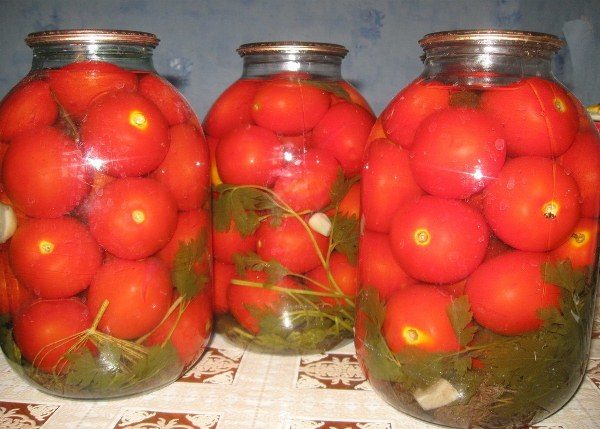
Its unpretentiousness and abundant fruiting Klusha variety won the love of gardeners. We recommend to please yourself and your family of excellent quality tomatoes.
